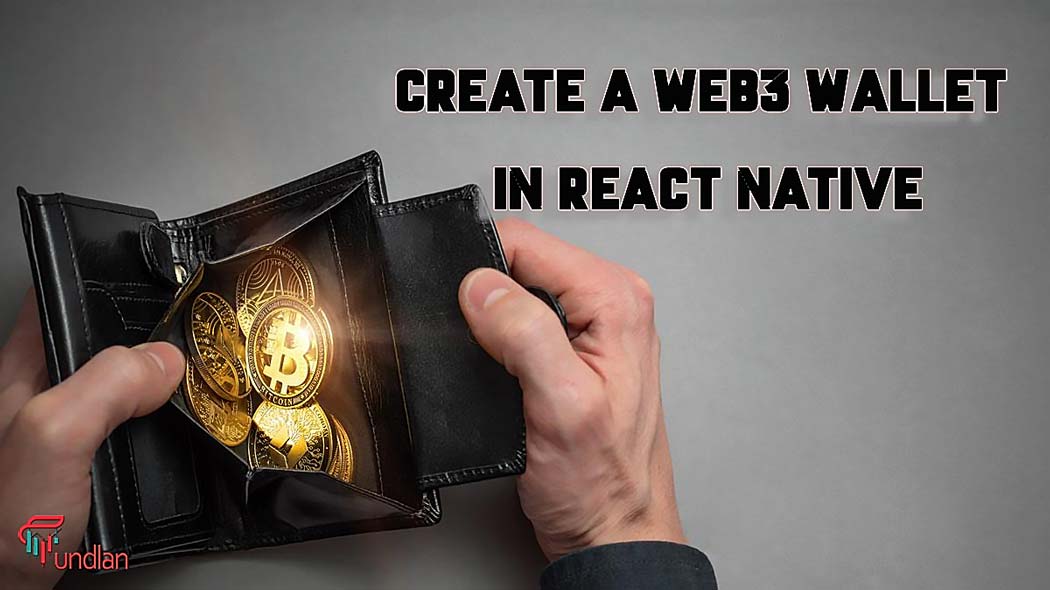In the rapidly evolving world of blockchain technology and decentralized applications, the React Native web3 wallet has emerged as a pivotal tool, bridging the gap between traditional mobile applications and the decentralized web.
This innovative solution harnesses the power of React Native, a popular cross-platform development framework, to enable seamless integration of Web3 functionalities into mobile wallets.
This essay will delve into the core concepts and see the functionalities of “What is React Native web3 wallet?” and its implications for the future blockchain.
Introducing React Native web3 wallet
The React Native web3 wallet is a cutting-edge solution that seamlessly integrates Web3 functionalities into mobile wallets, opening up new possibilities for users in decentralized applications and cryptocurrencies.
This innovative tool bridges traditional mobile applications and the decentralized web, empowering users with secure and user-friendly access to their digital assets and blockchain-based services.
With the React Native web3 wallet, users can interact with smart contracts, manage their cryptocurrency holdings, and engage with various decentralized finance (DeFi) platforms, all from the convenience of their mobile devices.
Developers (web3 developer salary) can create cross-platform applications that appeal to a larger audience and encourage the widespread adoption of decentralized technologies by utilizing the capabilities of React Native.
Moreover, the React Native web3 wallet enhances the user experience through its intuitive interface and smooth navigation, balancing complexity and simplicity.
As this technology continues to evolve, its e-commerce, gaming, and identity verification applications are expected to expand, further solidifying the React Native web3 wallet’s position as a key enabler in the decentralized digital economy.
How to create a web3 wallet in React Native?

Creating a web3 wallet in React Native opens up possibilities for securely managing cryptocurrencies and interacting with decentralized applications.
Follow the below guidance to create your own Web3 wallet in React Native:
1. Set up the development environment
Install Node.js and NPM on your computer if you haven’t already. Then, create a new React Native project using the React Native CLI or an appropriate template.
2. Install required dependencies
Add necessary packages like web3.js and ethers.js to interact with blockchain networks. Use NPM or yarn to install these dependencies into your React Native project.
3. Configure wallet backend
Create a backend server that handles private keys, wallet creation, and transaction signing. Ensure this server is secure and properly handles user data.
4. Design the user interface.
Design an intuitive and user-friendly interface for the web3 wallet using React Native components. Include options for viewing balances, sending/receiving cryptocurrencies, and interacting with dApps.
5. Implement wallet functionality
Integrate web3.js or ethers.js to connect the wallet to the blockchain network. Enable users to generate wallet addresses, check balances, and initiate transactions.
6. Manage wallet security
Implement strong security measures, such as encryption and secure storage, to safeguard private keys and sensitive information.
7. Test the wallet thoroughly.
Conduct extensive testing to ensure the wallet’s functionalities work as expected and that user data remains secure.
8. Deploy & publish
Once testing is successful, deploy the backend server and publish your React Native web3 wallet application to app stores or other distribution platforms.
9. Monitor & update
Regularly monitor the application for any vulnerabilities or performance issues. Stay up-to-date with the latest web3.js and React Native releases and update the wallet accordingly.
These instructions will enable you to create a reliable and helpful web3 wallet (learn web3 from scratch) in React Native, allowing users to confidently and conveniently explore the fascinating world of decentralized financial and blockchain-based services.
Conclusion
The advent of the React Native web3 wallet represents a significant step towards bridging the gap between traditional mobile applications and the decentralized web.
This innovative solution empowers users with secure, user-friendly access to their digital assets and blockchain-based services, opening new horizons for decentralized finance and blockchain applications.
As we witness rapid advancements in this space, the React Native web3 wallet’s potential for revolutionizing how we interact with cryptocurrencies, best web3 apps, and dApps cannot be overstated.
How do you envision the integration of web3 wallets shaping the future of mobile applications and blockchain-driven services?
We welcome your valuable insights and comments about “Why Does Airdrop Say Declined?” in the comment section. THANKS!

